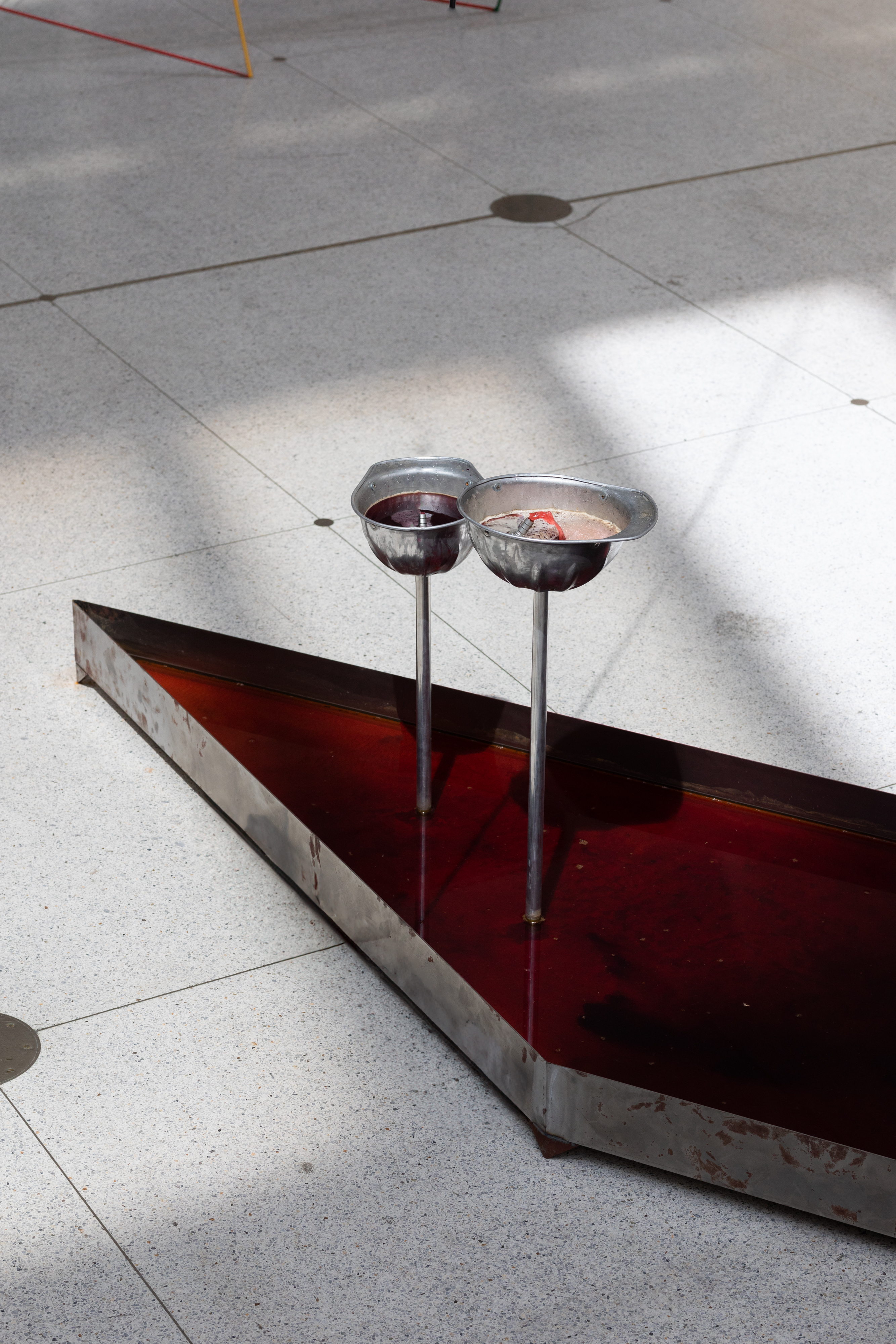Uladzimir Hramovich
Work exhibited in the Trade Fair Palace:
People of Salt / 2024 / installation / metal, aluminum, scythes, pumps, water, potassium permanganate, potassium, found objects / courtesy of the artist
Biennale Matter of Art 2024, National Gallery Prague – Trade Fair Palace © Jonáš Verešpej
In his artworks Uladzimir Hramovich (lives in Berlin, b. Minsk (Belarus),1989) uses materials that are also used in museums, construction sites, monuments. He asks the question: what if these materials, like concrete, granite, metal, and glass, not only get worse over time but also change history? In People of Salt he creates a fountain with different unusual elements. It is connected to the history of the city of Salihorsk. The city is famous for its salt mines. The water is colored with a potassium permanganate – salt that is extracted there. Some of these objects, like helmets, represent the hard work people do in mines, quarries, and construction sites. Others, like scythes, represent agricultural work in the countryside. Peasants used to fight their masters with scythes. The helmets are now fountains and the scythes are displayed with their blades pointing upwards. Their shape is changed – from the tools of work they became tools of struggle. The objects shown in the artwork are a symbol of workers and peasants fighting for their rights. The artwork is about two uprisings in Belarus. One happened in 2020 when workers went on strike against state and police violence. Many workers from the Salihorsk mines joined the strike. The other happened in 1863 against the Russian Empire’s colonial rule. The artist connects these struggles and how they were forgotten over time. The current government in Belarus is removing all memories of anti-colonial struggles, including monuments and texts in school books. Both the uprisings of 1863 and 2020 have failed – but what does the failure represent? How can we remember it and make use of it in the present moment?

From the artist's archive
Uladzimir Hramovich (b. 1989) is a Belarusian artist who currently lives and works in Berlin. He graduated from the Gymnasium-College of Arts named after I. O. Akhremchik in Minsk, Belarus, in 2009 and the graphic arts department of the Belarusian State Academy of Arts in Minsk in 2015. He has been a member of the Problem Collective since 2016. Hramovich works with installations, graphics, and video. For him, materials such as concrete, granite, metal, paper, and paint are not just surfaces for history to leave its imprint on but agents that are able to deform history. In his artistic practice, Hramovich draws on the history of modernist art and architecture, the history of ideology and political movements, and the transformation of the urban space in Minsk. He is interested in the tension between the past and the present and studies monuments and rituals of memory that are overloaded with ideological meanings and embodied in material objects.
Hramovich has presented his work at various international institutions, including Kunsthalle Exnergasse, Vienna, Austria; «Ў» Gallery of Contemporary Art, Minsk, Belarus; House of Arts, Brno, Czech Republic; Mystetskyi Arsenal, Kyiv, Ukraine; ABF, Stockholm, Sweden; Galerie Intershop, Leipzig, Germany; and others.






